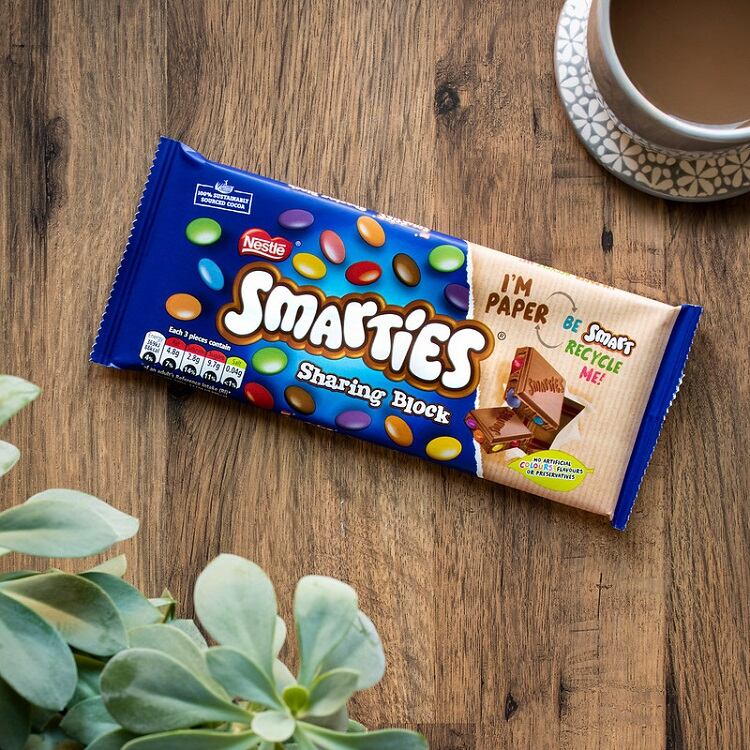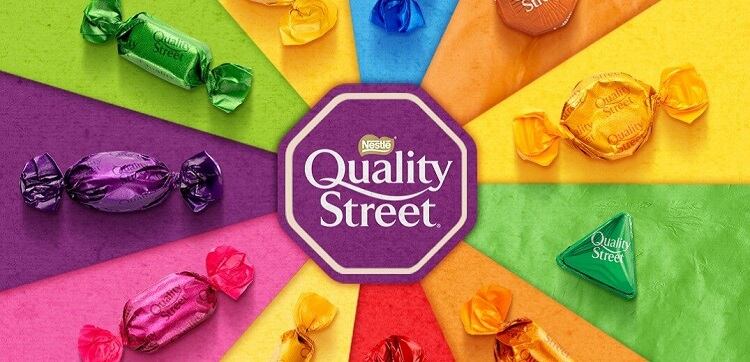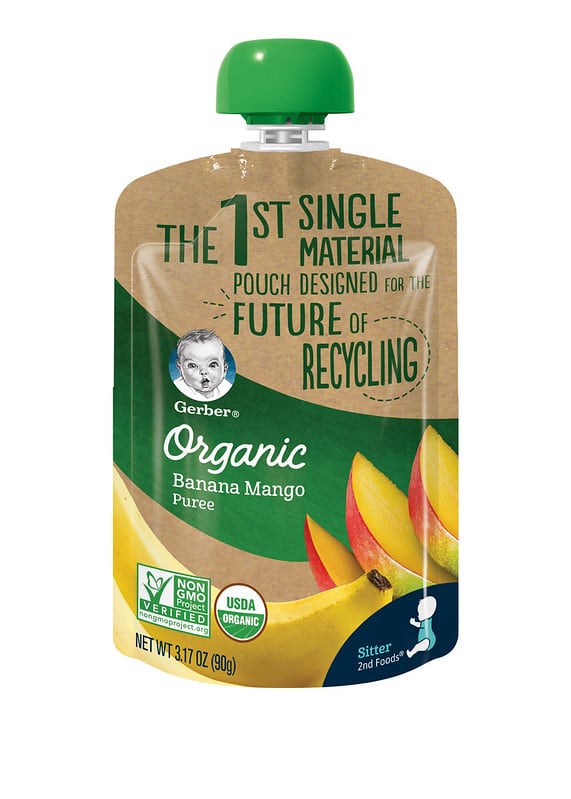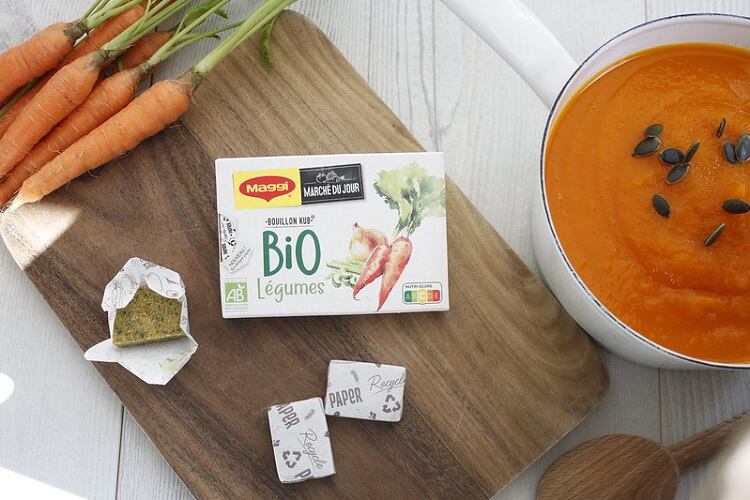Plastic pollution is a global concern. An estimated eight million tonnes of plastic enter the marine environment every year, wreaking havoc on our ecosystem.
And yet, plastic serves a purpose. In the food and beverage sector, the inexpensive and readily available material keeps food safe and fresh, which is why FMCGs often find themselves working with plastic – rather than completely against it – to develop sustainable packaging solutions.
This is the case for food major Nestlé, who has developed a three-pronged approach to the plastic problem: less packaging, better packaging, and better systems. Jodie Roussell, Public Affairs Lead, Packaging & Sustainability at Nestlé, explained where progress has been made to date, and where its focus now lies.
Less packaging: ‘The best packaging can be reused’
In 2019, Nestlé was using the most amount of virgin plastic packaging in its history. Since that date, it has been consistently reducing the amount of virgin plastic used year-on-year, while its business continues to grow.

The company has committed to reducing the use of newly made plastic or virgin plastic by one-third by 2025 and is on track to achieve this goal.
Nestlé has also made significant gains in reducing the overall weight of its plastic packaging. In 2019, the food major’s plastic packaging totalled 1.5m tons, and by the end of 2021 it has been cut by 35% to 0.98m tons.
This Roussell puts down to product portfolio shifts, including the phasing out of non-recyclable materials, and packaging redesigns. Reusable and refillable packaging comes under this umbrella, Roussell explained to journalists during a media briefing.
“We’re scaling reuse and bulk refill systems to eliminate the need for disposable single use packaging, and we’re working with our retail partners on this.”
This year, for example, Nestlé teamed up with Carrefour in France to launch three new product categories in their bulk alley system: coffee, confectionery, and pet food. “With bulk dispensers and QR codes, customers can bring their own packaging – or acquire packaging onsite at Carrefour – fill it up, label it, and then take it home,” explained Roussel.
“The best packaging is packaging that can be reused.”
Since consumers are largely used to single use packaging designed for convenience, a change in consumer behaviour is required to ensure the success of refillable systems. Nestlé is aware of the role consumer education must play, we were told.
“Consumer education is one of the five pillars of our packaging sustainability system. We’re also focused on using the back of our packages to educate consumers…about recycling or alternatives to reuse,” explained Roussel.
To date, the FMCG has run 20 pilots in 12 countries, but recognises ‘more needs to be done’. Through these pilots, however, Nestlé has ‘learned a lot’ about what is required in terms of supporting education as well as ‘ease of use’ for consumers.
Better packaging: From multi- to mono-material
Back in 2018, Nestlé announced its ambition to make 100% of its packaging recyclable or reusable by 2025. As of the end of 2021, 80% of its plastic packaging had been designed for recycling – meaning it could be recycled in dedicated recycling facilities.
While the company doesn’t anticipate it will achieve its goal, it does expect to reach more than 95% by 2025. “We remain committed to achieving 100%,” stressed Nestlé’s Roussell.
So will the FMCG achieve above 95%? Part of it lies in packaging redesign. “We are looking at pioneering alternative materials that can facilitate recycling. This involves a shift from multi-material, flexible plastics to mono-material, as well as the shift to paper for product applications where this is possible.”
Every time Nestlé redesigns a packaging, it conducts a life cycle assessment to ensure the new packaging design has an equal or lower carbon footprint. “We’re always targeting the lower carbon footprint with every redesign we do, because as a company, we’re targeting Net Zero by 2050.
“Packaging today is 10% of our total emissions…so we’re looking at all the ways we can…reduce emissions that are associated with our packaging footprint.”
Nestlé has shifted a number of its brands towards paper packaging of late. Last year, the company completed the transition from plastic to recyclable paper packaging for its Smarties brand.
2021 also saw Nestlé complete the phase out of plastic straws – replaced all 4.7bn produced annually with paper straws. “It was a multi-year programme to develop technology for straws that could survive a child chewing on them for over 30 minutes,” recalled Roussell. The result is a recyclable paper straw that ‘rapidly’ dissolves in a pulping system.
“As of the end of 2021, we achieved a 100% phase-out of plastic straws globally.”
And just last month. Nestlé swapped out non-recyclable packaging from its Quality Street wrappers for a recyclable paper alternative. “The complexity of having nine different sweet shapes, produced on machines designed to run cellophane and foil, whilst being in full and continuous production, [made] this an extremely challenging development,” Bruce Funnell, Packaging Lead at Nestlé’s Confectionery Product Technology Centre recently told FoodNavigator.

Examples of a plastic package designed for recycling include a 100% PET bottle or a snack pouch made from 100% polypropylene. “Design for recycling is something that companies have in their control. It’s also something that regulation can support,” explained Roussell.
“Voluntary initiatives like the Consumer Food Forum’s Golden Design Rules – of which we are a supporter and also an implementer – are a great way that industry can harmonise design standards to facilitate any type of packaging being recyclable.”
Consumer education is also important here. Packaging can be designed to be recyclable but will only be recycled if a consumer knows how to deal with it end-of-life.
“We participate in extended producer responsibility systems all around the world where our products are sold,” said Roussell. “Today, there are 58 countries with extended producer responsibility laws and producer responsibility organisations that support them.”

These organisations spend ‘millions’ every year on consumer advertising and education. “Whether we look at recycling or reuse, we recognise there is a lot we can do in every step of the value chain to educate consumers.”
Better systems: It’s not recyclable if it can’t be recycled
When it comes to recyclability, packaging design and consumer education are only part of the story. The other piece of the puzzle is recycling infrastructure, which is integral to ensuring recyclable packaging is in fact recycled.
Nestlé believes it is important to support dedicated recycling infrastructure. “We’re advocating for extended producer responsibility, deposit return systems, and for a legally binding Global Plastics Treaty, where negotiations will begin at the end of November in Uruguay under the framework of the United Nations Environment Programme,” said Roussell.
“We look forward to the prospect of new harmonised national regulations that might follow, because we believe this will help us in ending plastic pollution.”


